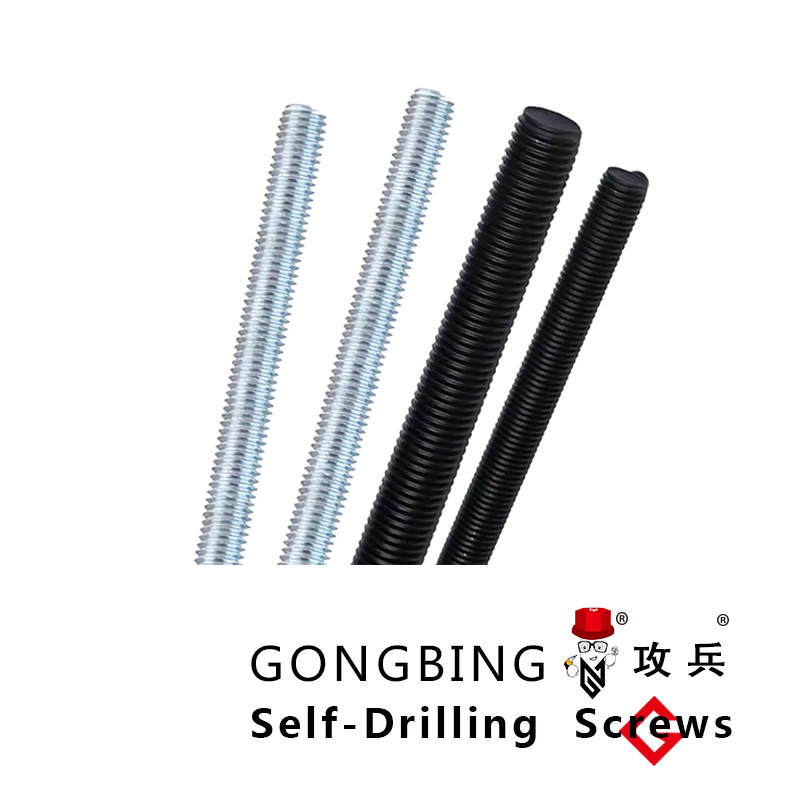Understanding the Benefits and Applications of Self-Drilling Bolts in Construction
Understanding Self-Drilling Bolts Revolutionizing Construction and Engineering
Self-drilling bolts are a significant innovation in the construction and engineering sectors, providing an efficient solution for various fastening needs. These bolts are specifically designed to drill into materials while also functioning as a fastening device. This dual capability makes them a preferred choice for many applications, particularly where speed and ease of installation are paramount.
What Are Self-Drilling Bolts?
Self-drilling bolts are a type of fastener that incorporates a drill bit at its tip. This feature allows the bolt to penetrate the material being fastened without the need for a pre-drilled hole. The design of these bolts typically includes a sharp point and a flute, which helps remove debris as the bolt drills into the material. They are often used in applications like metal-to-metal fastening or in construction where metal sheathing is common.
Advantages of Self-Drilling Bolts
1. Time Efficiency One of the primary advantages of self-drilling bolts is their ability to significantly reduce installation time. Traditional fastening methods often require multiple steps – drilling a hole, inserting a bolt, and securing it. Self-drilling bolts eliminate the need for the first step, allowing for quicker assembly and reduced labor costs.
2. Reduced Equipment Requirements With self-drilling bolts, the need for complex power tools and additional hardware is minimized. This can lead to lower material costs and simplified inventory management for contractors.
3. Improved Consistency Self-drilling bolts offer a level of consistency in fastening that can be challenging to achieve with other methods. The uniformity of installation contributes to the overall structural integrity of the project.
4. Versatility These bolts can be used in various applications across different industries, from residential and commercial construction to automotive and aerospace. They can fasten materials such as steel, aluminum, and other types of metal, making them extremely versatile.
self drilling bolts

Applications of Self-Drilling Bolts
Self-drilling bolts find use in a wide range of applications
- Structural Steel Assembly In constructing buildings and bridges, self-drilling bolts can secure steel beams and columns efficiently. - Metal Roofing and Siding For roofing and cladding applications, these bolts are ideal for attaching metal panels to wooden or metal frames. - Automotive Manufacturing The automotive industry widely utilizes self-drilling bolts to attach components without compromising speed or safety. - HVAC Installations They are also commonly used for fastening ducts, supports, and other elements in heating, ventilation, and air conditioning systems.
Considerations When Using Self-Drilling Bolts
While self-drilling bolts offer numerous benefits, proper selection and installation are crucial to maximize their advantages. Factors to consider include
- Material Thickness The thickness of the material being fastened should be compatible with the specifications of the self-drilling bolt. - Bolt Length It is essential to choose the correct length of the bolt to ensure a secure connection without compromising the material being fastened. - Environmental Conditions Corrosion resistance is vital, especially in outdoor applications. Selecting bolts coated with materials to resist rust and degradation will enhance longevity.
Conclusion
Self-drilling bolts represent a significant advancement in the realm of fastening technology. Their ability to combine the functions of drilling and fastening into a single step saves time, reduces labor costs, and enhances the efficiency of construction and manufacturing processes. As industries continue to evolve and seek more efficient methods of assembly, self-drilling bolts will undoubtedly remain a fundamental component in modern engineering and construction projects. Their versatility and reliability ensure that they will be integral in shaping the future of building practices across various sectors. Understanding their applications, advantages, and installation considerations will empower builders and engineers to utilize these innovative fasteners effectively, ultimately leading to safer and more robust constructions.
-
Weatherproof Plastic Expansion Anchors for OutdoorNewsJun.06,2025
-
Sustainability in the Supply Chain: Eco-Friendly TEK Screws ProductionNewsJun.06,2025
-
Load-Bearing Capacity of External Insulation FixingsNewsJun.06,2025
-
Double Head Bolts: Enhancing Efficiency in Industrial MachineryNewsJun.06,2025
-
Corrosion Resistance in Chipboard Screws: Coatings for Wholesale DurabilityNewsJun.06,2025
-
Butterfly Toggle Bolts : Enhancing Structural ResilienceNewsJun.06,2025
